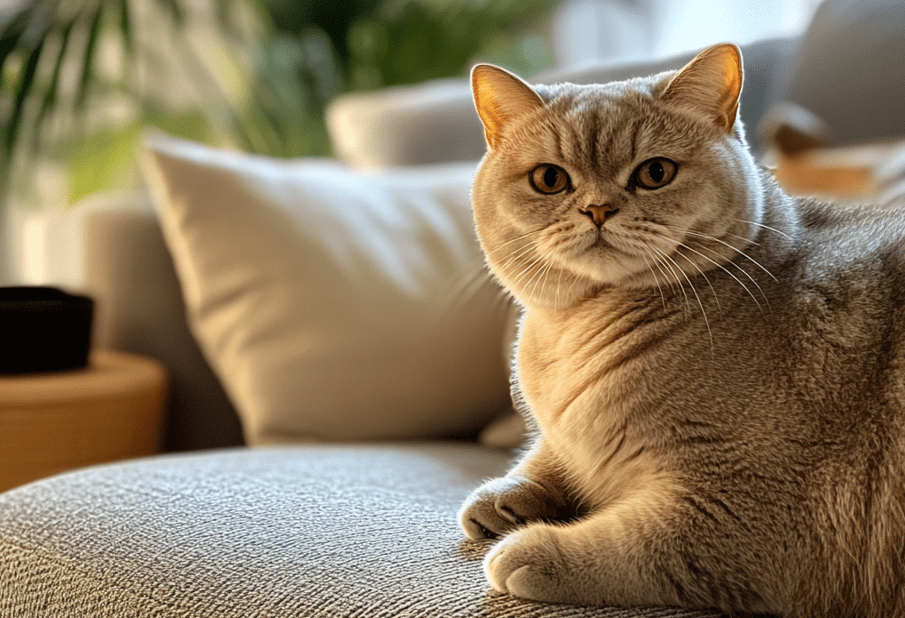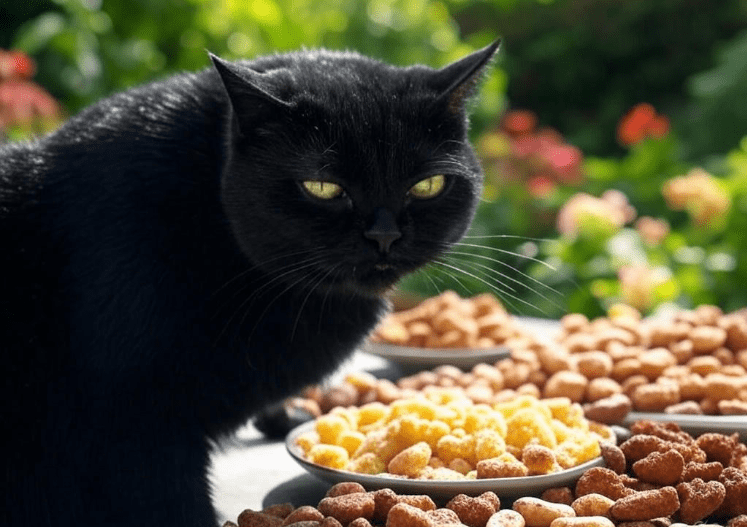
British Shorthairs are cherished for their calm demeanor and sturdy, muscular builds, but their sensitive digestive systems require careful dietary changes. If you’re wondering how to transition British Shorthair to new food safely, this guide is for you. Switching foods—whether to a high-protein diet, a new brand, or a specialized formula—must be done thoughtfully to avoid stress and health issues. This comprehensive article covers the step-by-step process, potential challenges, and expert tips to ensure a smooth dietary transition for your British Shorthair.
Why Transitioning Food Matters for British Shorthairs
British Shorthairs, with their stocky frames and dense coats, have unique nutritional needs. Their slower metabolism and predisposition to obesity make dietary choices critical. A sudden change in food can upset their digestive system, leading to vomiting, diarrhea, or refusal to eat. Transitioning gradually helps their stomach and gut microbiome adjust, reducing the risk of gastrointestinal distress and ensuring they receive the nutrients they need.
Additionally, British Shorthairs can be finicky eaters. A poorly managed transition might cause them to reject the new food entirely, leading to nutritional deficiencies or stress. A safe transition prioritizes their health and comfort, setting the stage for long-term dietary success.
When Should You Transition Your British Shorthair to a New Food?
There are several reasons to switch your British Shorthair’s food, including:
Health Needs: A vet-recommended diet to address obesity, allergies, or conditions like urinary tract issues.
Age-Related Changes: Kittens, adults, and seniors have different nutritional requirements.
Dietary Improvement: Moving to a higher-quality food, such as a high-protein, low-carb option.
Food Discontinuation: If your current brand is no longer available.
Preference or Sensitivity: Your cat may develop a dislike for their current food or show signs of intolerance.
Regardless of the reason, the key is to make the switch gradually to minimize disruption to your cat’s routine and health.
Step-by-Step Guide to Transition British Shorthair to New Food Safely
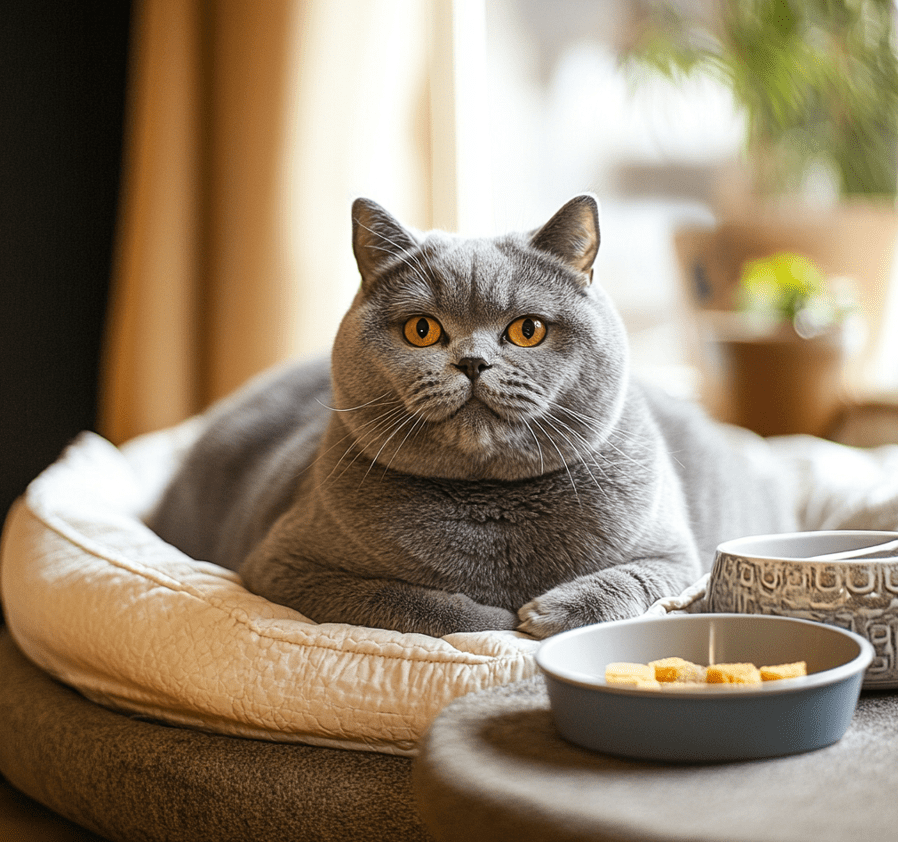
Here’s a detailed plan to ensure a smooth and safe transition for your British Shorthair:
Step 1: Consult Your Veterinarian
Before making any dietary changes, consult your veterinarian. British Shorthairs are prone to specific health issues, such as obesity, hypertrophic cardiomyopathy (HCM), and urinary problems, which may influence the type of food you choose. Your vet can recommend a formula that aligns with your cat’s age, weight, and health status, ensuring the new food meets their nutritional needs.
Step 2: Choose the Right Food
Select a high-quality food that suits your British Shorthair’s needs. Look for:
High Protein Content: As obligate carnivores, British Shorthairs thrive on animal-based proteins like chicken, turkey, or fish.
Low Carbohydrates: Avoid fillers like corn, wheat, or soy, which can contribute to weight gain.
Added Nutrients: Ensure the food includes taurine, omega-3 fatty acids, and vitamins for heart, coat, and immune health.
Minimal Additives: Steer clear of artificial colors, flavors, or preservatives that might cause sensitivities.
If your cat has specific health concerns, such as kidney issues or food allergies, your vet may suggest a prescription diet.
Step 3: Start with a Gradual Mix
A sudden switch can shock your British Shorthair’s digestive system. Follow this timeline to mix the old and new food:
Days 1-3: Mix 25% new food with 75% old food. Monitor your cat’s appetite, stool consistency, and behavior.
Days 4-6: Increase to 50% new food and 50% old food. Continue observing for any signs of distress.
Days 7-9: Shift to 75% new food and 25% old food. By now, your cat should be adjusting well.
Day 10 and Beyond: Feed 100% new food, provided your cat shows no adverse reactions.
This 10-day transition period can be adjusted based on your cat’s response. Some British Shorthairs may need a slower transition, taking up to 2-3 weeks.
Step 4: Monitor Your Cat’s Response
During the transition, keep a close eye on your British Shorthair for signs of trouble, including:
Digestive Issues: Vomiting, diarrhea, or constipation may indicate the new food isn’t agreeing with them.
Appetite Changes: Refusal to eat or reduced appetite could signal dislike or stress.
Behavioral Changes: Lethargy, irritability, or excessive grooming might suggest discomfort.
Allergic Reactions: Watch for itching, redness, or ear infections, which could indicate a food sensitivity.
If you notice any of these issues, slow down the transition or consult your vet. They may recommend a different food or additional steps to ease the process.
Step 5: Ensure Proper Hydration
British Shorthairs are prone to urinary tract issues, such as cystitis or bladder stones, especially during dietary changes. Ensure they have constant access to fresh water to support kidney and urinary health. If transitioning to dry food, consider adding wet food to their diet to increase moisture intake.
Step 6: Adjust Portions as Needed
The new food may have a different caloric density than the old one. Recalculate portion sizes based on your British Shorthair’s weight, activity level, and the feeding guidelines on the new food’s packaging. Overfeeding can lead to obesity, a common issue in this breed, so measure portions carefully and avoid free-feeding.
Step 7: Be Patient and Consistent
British Shorthairs can be stubborn when it comes to food changes. If your cat resists the new food, don’t give up immediately. Consistency is key, but avoid forcing the issue, as this can create stress. If the transition isn’t working after a few weeks, consult your vet for alternative options.
Tips for Dealing with a Picky British Shorthair
British Shorthairs are notorious for being picky eaters, which can complicate the transition process. Here are some strategies to encourage acceptance of the new food:
Warm the Food: Slightly warming wet food (to around body temperature) can enhance its aroma and make it more appealing. Be careful not to overheat, as this can burn your cat’s mouth.
Mix in a Topper: Add a small amount of low-sodium tuna juice, chicken broth, or a high-protein treat to make the new food more enticing.
Offer Small Portions: Serve small amounts of the new food alongside the old to avoid overwhelming your cat.
Stick to a Routine: Feed at the same times each day to create a sense of predictability, which British Shorthairs appreciate.
Minimize Stress: Ensure their feeding area is quiet and free from distractions, as stress can reduce appetite.
Avoid switching back to the old food entirely if your cat resists, as this can reinforce picky behavior. Instead, slow the transition and try different encouragement techniques.
Common Mistakes to Avoid During the Transition
Even well-intentioned owners can make mistakes when transitioning their British Shorthair to a new food. Avoid these pitfalls:
Switching Too Quickly: A sudden change can cause digestive upset or food aversion. Always transition gradually.
Ignoring Signs of Distress: If your cat shows signs of illness or discomfort, don’t push through the transition without consulting a vet.
Choosing Low-Quality Food: Opting for a cheap food with fillers or artificial additives can harm your cat’s health in the long run.
Overfeeding Treats: Using too many treats to encourage eating can unbalance their diet and lead to weight gain.
Neglecting Hydration: Failing to ensure adequate water intake can exacerbate urinary issues during the transition.
Wet vs. Dry Food: Considerations for Transitioning
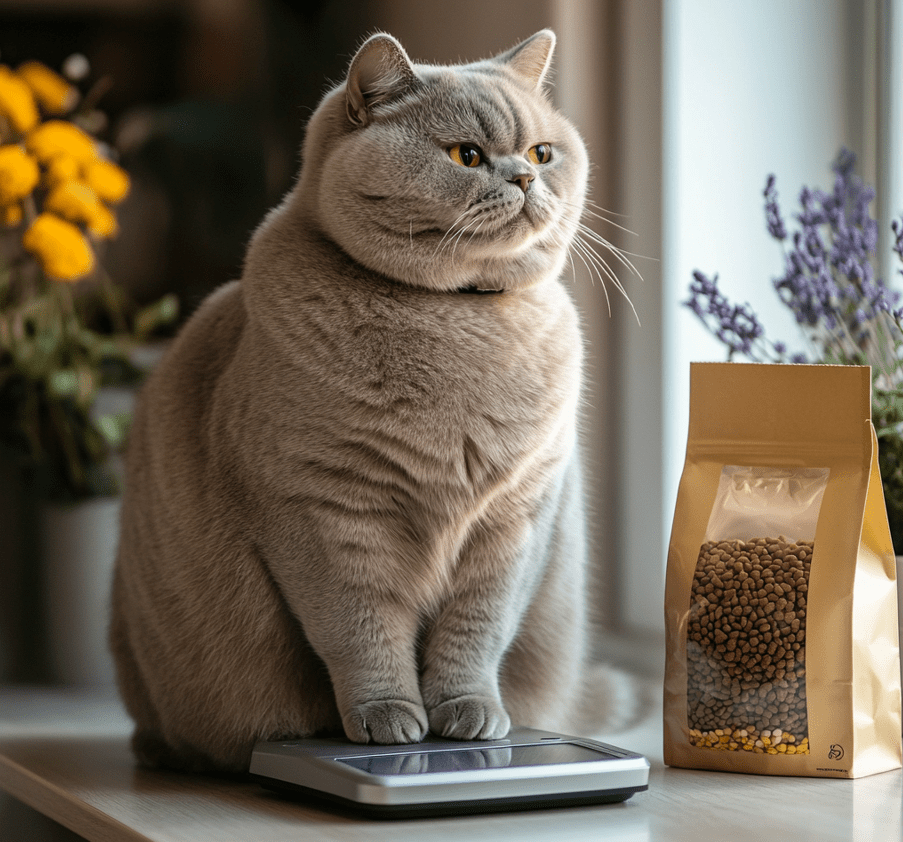
The type of food you’re transitioning to—wet, dry, or a combination—affects the process. British Shorthairs often benefit from a mix of both, but each has unique considerations:
Transitioning to Wet Food
Pros: Higher moisture content supports urinary health, often more palatable, and typically lower in carbs.
Cons: Can be messier, requires refrigeration, and may lead to dental issues if not paired with dry food or dental care.
Transition Tip: If your cat is used to dry food, mix in small amounts of wet food gradually, ensuring they adjust to the new texture.
Transitioning to Dry Food
Pros: Convenient, cost-effective, and helps reduce tartar buildup on teeth.
Cons: Lower moisture content can increase the risk of urinary issues, and some cats may find it less appealing.
Transition Tip: Add a small amount of water or low-sodium broth to the dry food to make it more enticing and increase hydration.
A combination of wet and dry food can provide the best of both worlds, ensuring your British Shorthair gets adequate moisture and nutrition while maintaining dental health.
Transitioning to Specialized Diets
If your British Shorthair requires a specialized diet—such as a high-protein, grain-free, or prescription formula—the transition process remains the same, but additional care is needed:
High-Protein Diets: These are ideal for British Shorthairs to support muscle mass and weight management. Ensure the protein comes from animal sources and monitor for overfeeding, as high-protein foods can be calorie-dense.
Grain-Free Diets: Useful for cats with grain sensitivities, but ensure the food doesn’t replace grains with high-carb alternatives like potatoes.
Prescription Diets: For conditions like kidney disease or urinary issues, follow your vet’s guidance closely. These diets may have a different taste or texture, so extra encouragement may be needed.
Health Considerations During the Transition
British Shorthairs are prone to certain health issues that can be affected by dietary changes. Keep these in mind:
Obesity: Monitor weight during the transition, as overfeeding can exacerbate this common issue. Adjust portions if the new food is more calorie-dense.
Urinary Health: Ensure adequate hydration, especially if switching to dry food, to prevent cystitis or bladder stones.
Digestive Sensitivities: British Shorthairs can have sensitive stomachs. If diarrhea or vomiting persists, slow the transition or try a different food.
Allergies: Watch for signs of food allergies, such as itching or ear infections, which may indicate an intolerance to the new food.
Regular vet checkups during and after the transition can help catch any issues early and ensure your cat’s health remains on track.
How Long Should the Transition Take?
The standard transition period is 7-14 days, but every British Shorthair is different. Factors that may extend the process include:
Age: Kittens and seniors may need a slower transition due to more sensitive digestive systems.
Health Status: Cats with existing health issues, such as gastrointestinal problems, may require a more gradual change.
Personality: Picky or stressed cats may take longer to accept the new food.
If your cat isn’t fully transitioned after two weeks, don’t rush the process. Continue mixing the old and new food until they’re comfortable with the change.
What to Do If the Transition Fails
If your British Shorthair refuses the new food or shows persistent signs of distress, take these steps:
Slow Down: Return to a higher proportion of the old food and extend the transition period.
Try a Different Food: The new food may not suit your cat’s taste or dietary needs. Look for a similar formula with a different protein source or texture.
Consult Your Vet: Persistent issues may indicate an underlying health problem or food intolerance.
Use Encouragement Techniques: Experiment with food toppers, warming the food, or offering it in a different bowl to make it more appealing.
Never force your cat to eat a food they consistently reject, as this can lead to stress and a negative association with mealtime.
Maintaining a Balanced Diet After the Transition
Once your British Shorthair has fully transitioned to the new food, focus on maintaining a balanced diet:
Stick to a Schedule: Feed at consistent times each day to support their routine.
Monitor Weight: Weigh your cat regularly to ensure they’re maintaining a healthy weight, adjusting portions as needed.
Provide Variety: Occasionally rotate protein sources (e.g., chicken to fish) to prevent boredom and ensure a range of nutrients, but introduce new proteins gradually.
Limit Treats: Treats should make up no more than 10% of their daily caloric intake to avoid nutritional imbalances.
Conclusion
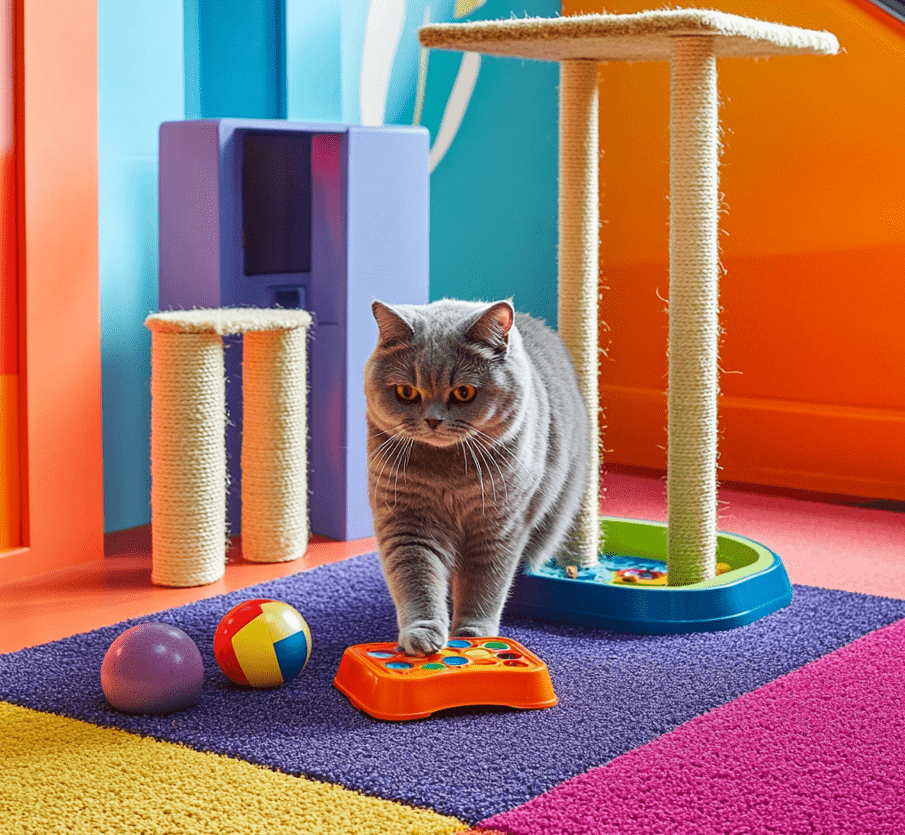
Transitioning your British Shorthair to a new food safely is a process that requires patience, observation, and care. By following a gradual transition plan, monitoring your cat’s response, and addressing any challenges with expert tips, you can ensure a smooth dietary change that supports their health and happiness. Whether you’re switching to a high-protein diet, a grain-free formula, or a vet-recommended food, the key is to prioritize your British Shorthair’s comfort and nutritional needs. With the right approach, your cat will thrive on their new diet, enjoying a vibrant and healthy life.



